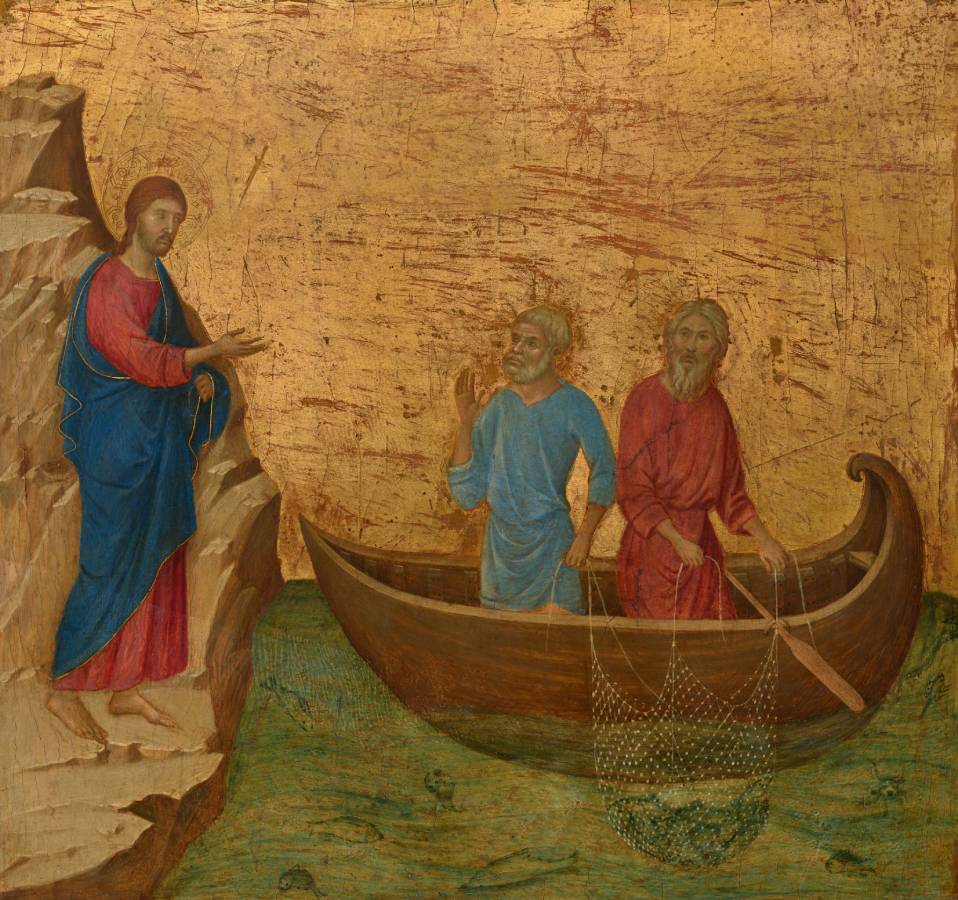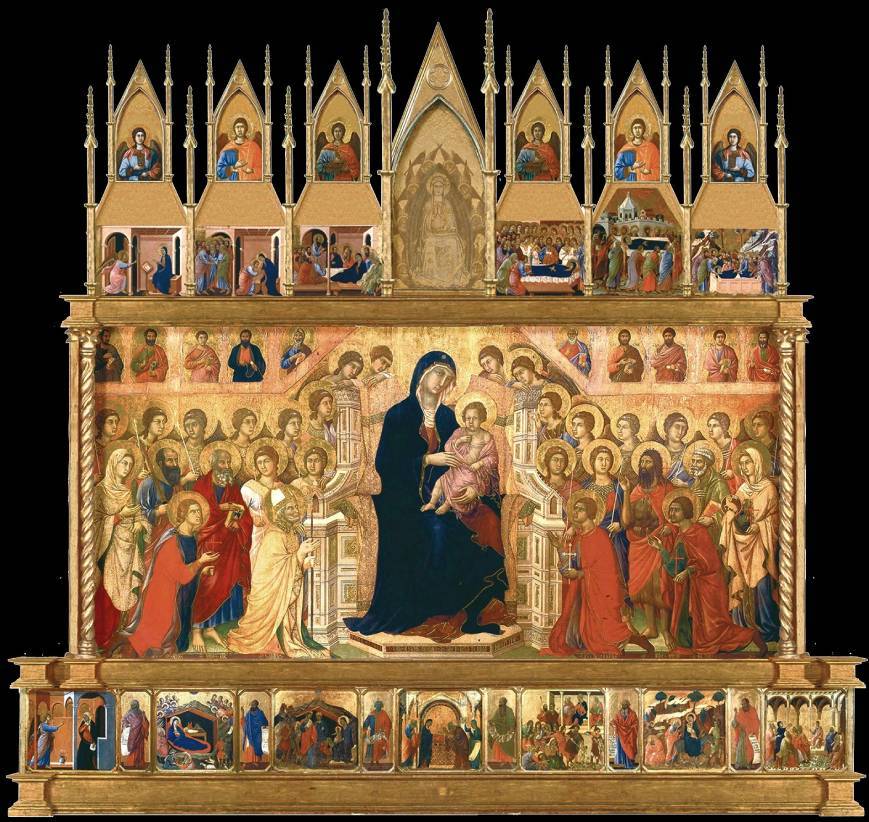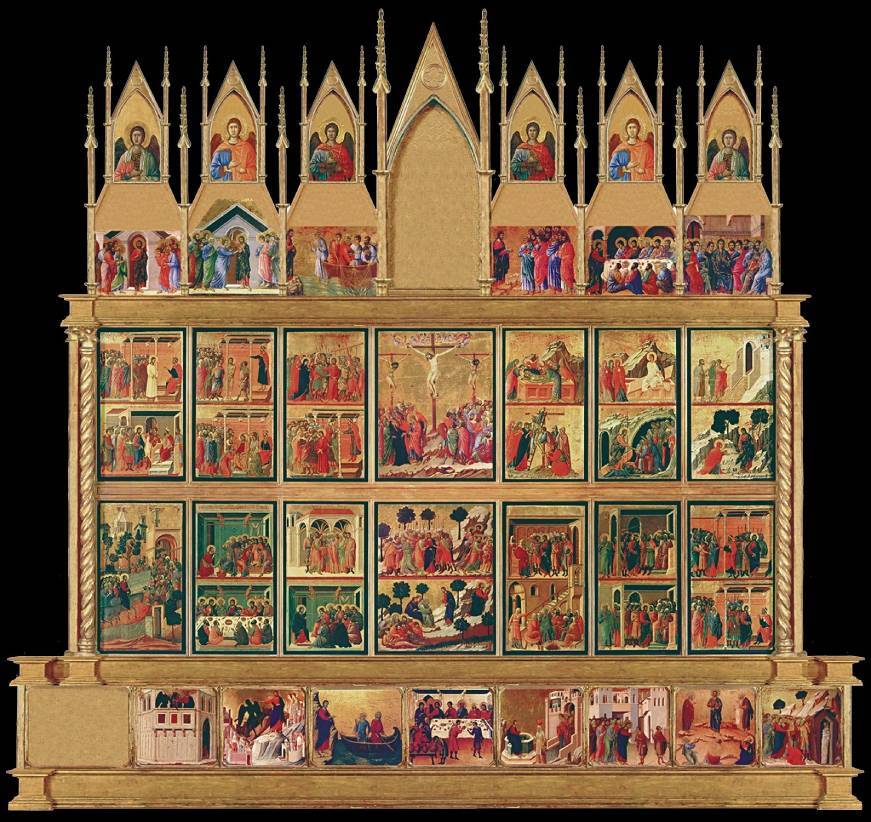Duccio di Buoninsegna (c.1255-c.1319)
La vocazione degli apostoli Pietro e Andrea (The Calling of the Apostles Peter and Andrew)
1308–1311
Tempera on panel, 42.7 × 45.5 cm
National Gallery of Art, Washington
This painting was part of the predella (the bottom tier) of the Maestà altarpiece made for the Cathedral of Siena.
Virtual reconstruction of the Maestà Altarpiece (1308-1311).
Virtual reconstruction of the Maestà Altarpiece (back).
Like Duccio’s The Nativity with the Prophets Isaiah and Ezekiel, this small panel was part of the Maestà, one of the most important masterpieces in the history of Western painting. The monumental Maestà was a two-sided altarpiece that dominated the main altar in Siena’s cathedral for nearly two centuries. Within the vast black-and-white striped interior of the church, it would have glittered in the colored light that washed down through stained glass. Completed in less than three years, the Maestà was a huge undertaking, for which Duccio received 3,000 gold florins—more than any artist had ever commanded. Although he must have had substantial help from his pupils and workshop assistants, the design and execution indicates that Duccio exercised control over the whole project. Moved to a side altar in 1506, the altarpiece was sawn apart in the 1770s and individual panels subsequently dispersed. This makes it impossible to determine its dimensions with certainty, but it must have been about 15 feet wide, with the gables rising to as much as 17 feet high. In all, there were probably more than 70 individual scenes (see Reconstructions).
This panel was located on the back of the altarpiece, where the imagery was devoted to Christ’s Passion and his mission as teacher—apt subjects for the rear panels, which would have been seen only by clergy standing behind the altar. Here we find Jesus calling his first disciples. He approaches two fishermen at work on the Sea of Galilee: Simon, called Peter, and his brother Andrew. Their net is full when Jesus says to them: “Follow me, and I will make you fishers of men” (Matthew 4:18).
This panel is one of the highlights of Duccio’s accomplishments and likely one of the last created, displaying all the lessons learned over the years of painting the Maestà. The figures are sensitively human, their gestures expressive, their draperies lyrical yet describing the bodies beneath. Duccio’s setting is evocative of nature, yet reminds us, with the gilded sky, that capturing the physical world is not this painter’s top priority. (NGA)
Central panel:
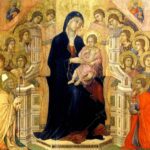 Duccio di Buoninsegna (c.1255-c.1319)
Duccio di Buoninsegna (c.1255-c.1319)
Maestà
1308–1311
Duomo di Siena, Siena
Predella:
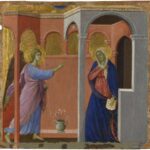 Duccio di Buoninsegna (c.1255-c.1319)
Duccio di Buoninsegna (c.1255-c.1319)
Annunciazione
c.1307–1311
National Gallery, London
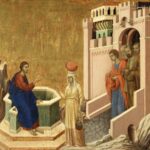 Duccio di Buoninsegna (c.1255-c.1319)
Duccio di Buoninsegna (c.1255-c.1319)
Cristo e la Samaritana
1310–1311
Museo Thyssen-Bornemisza, Madrid
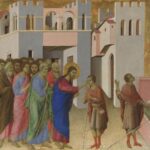 Duccio di Buoninsegna (c.1255-c.1319)
Duccio di Buoninsegna (c.1255-c.1319)
Guarigione del cieco nato
c.1307–1311
National Gallery, London
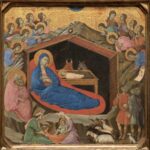 Duccio di Buoninsegna (c.1255-c.1319)
Duccio di Buoninsegna (c.1255-c.1319)
Natività con i profeti Isaia ed Ezechiele
1308–1311
National Gallery of Art, Washington
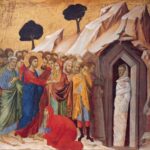 Duccio di Buoninsegna (c.1255-c.1319)
Duccio di Buoninsegna (c.1255-c.1319)
Resurrezione di Lazzaro
1310–1311
Kimbell Art Museum, Fort Worth
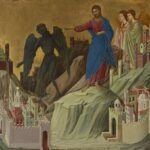 Duccio di Buoninsegna (c.1255-c.1319)
Duccio di Buoninsegna (c.1255-c.1319)
Tentazione sul monte
1308–1311
Frick Collection, New York
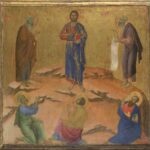 Duccio di Buoninsegna (c.1255-c.1319)
Duccio di Buoninsegna (c.1255-c.1319)
Trasfigurazione
c.1307–1311
National Gallery, London
